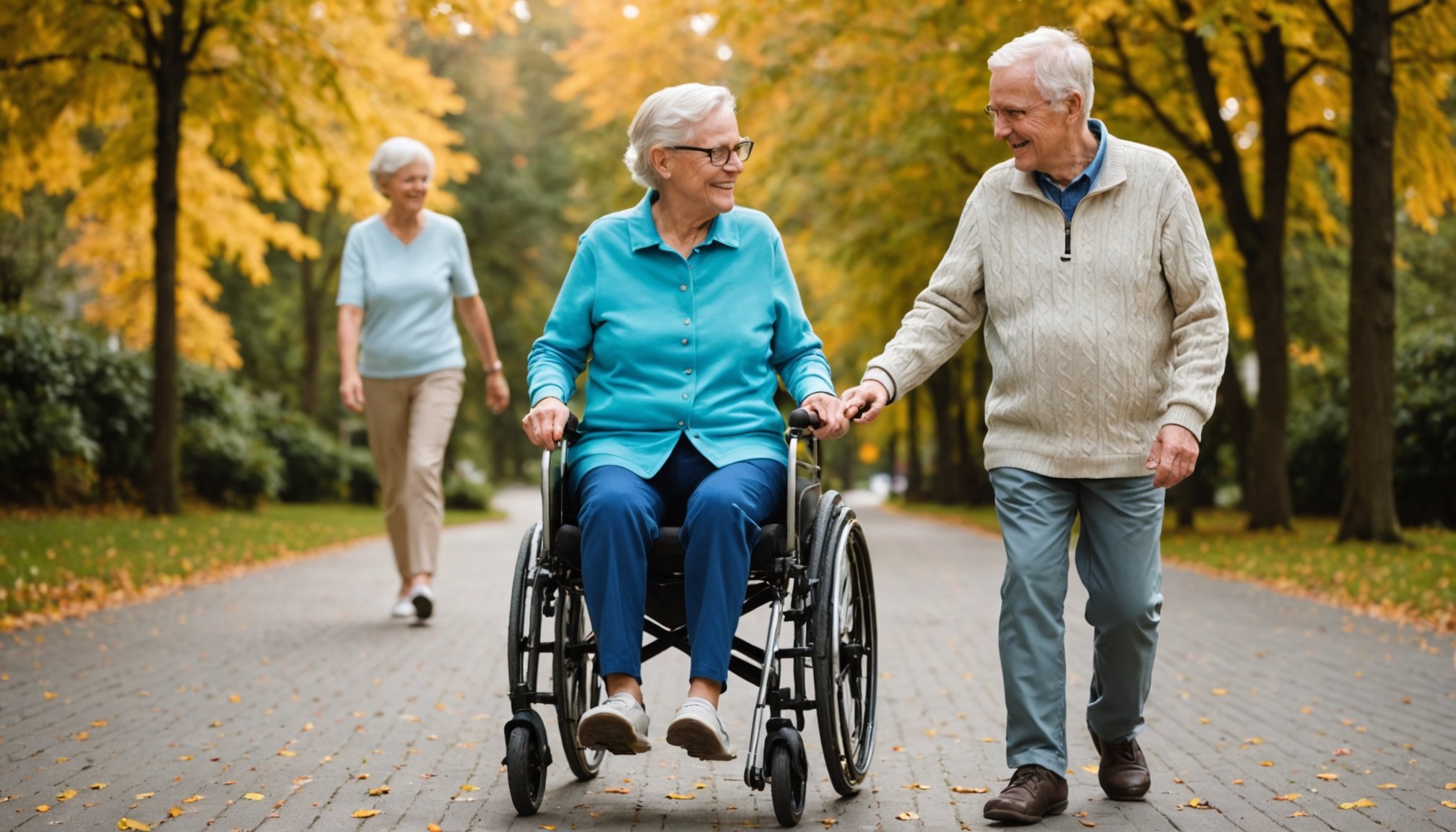Choosing the right adaptive clothing for seniors can significantly enhance their comfort and independence. This guide highlights essential features to consider, ensuring clothing meets specific needs while maintaining style. From fabric choices to closures, understanding these elements can transform daily dressing routines into a more enjoyable experience. Discover how thoughtful selections can foster greater confidence and dignity in seniors as they navigate daily activities with ease.
Understanding Adaptive Clothing
Exploring the essentials of senior-friendly apparel.
This might interest you : Essential Considerations for Selecting the Perfect Hearing Aid for Seniors Facing Hearing Loss
Definition and Purpose
Adaptive clothing is specially designed to meet the needs of individuals with physical limitations, including seniors. This type of apparel prioritizes accessibility and ease of use, often featuring modifications like Velcro closures, elastic waistbands, and open-back designs. These changes facilitate dressing for those who may struggle with traditional clothing fasteners, ensuring that seniors maintain their independence and dignity.
Importance of Accessibility
The focus on accessibility in clothing design is crucial for seniors who experience mobility challenges. By incorporating user-friendly features, senior-friendly apparel reduces the need for assistance, allowing individuals to dress with ease. This not only enhances comfort but also promotes a sense of autonomy and self-reliance.
Topic to read : Top Footwear Options for Seniors Dealing with Bunions: A Comprehensive Guide
Market Trends
The market for adaptive clothing is experiencing significant growth as awareness of its benefits increases. More retailers are recognizing the value of offering senior-friendly apparel, leading to a wider range of styles and options. This growth reflects a broader trend towards inclusivity and accessibility in fashion, catering to an aging population with diverse needs.
- Adaptive clothing designs
- Senior-friendly apparel benefits
- Market expansion and trends
Key Features of Adaptive Clothing
Senior-friendly apparel designed for functionality and ease.
Fabric Types
Adaptive clothing utilizes comfortable, breathable, and easy-care materials. These fabrics are crucial for ensuring that the clothing remains soft against the skin, reducing irritation. Breathability helps regulate body temperature, a significant consideration for seniors. Easy-care fabrics simplify maintenance, allowing for machine washing and minimal ironing. This combination of attributes ensures that the clothing is not only practical but also comfortable for everyday wear.
Sizing and Adjustability
Inclusive sizing is a key feature of adaptive clothing. It accommodates various body shapes and sizes, promoting a better fit for all individuals. Adjustable features like elastic waistbands and Velcro closures allow for personalized fitting, enhancing comfort and functionality. This adaptability is essential, as it ensures that the apparel meets the unique needs of each wearer, supporting their independence.
Ease of Dressing
Designs that promote ease of dressing are fundamental in adaptive clothing. These designs reduce dressing time and encourage independence. Features such as open-back designs and magnetic closures simplify the process, making it more accessible for those with limited mobility. By focusing on ease of use, adaptive clothing empowers seniors to dress themselves with minimal assistance, fostering a sense of autonomy.
- Comfortable, breathable fabrics
- Inclusive sizing and adjustability
- Ease of dressing features
Functionality and Design Considerations
Exploring practical clothing solutions for enhanced mobility.
Adaptive Fasteners and Closures
For individuals with limited mobility, adaptive fasteners and closures are essential. These features, such as Velcro and magnetic closures, offer practical solutions by simplifying the process of dressing. They replace traditional buttons and zippers, which can be challenging for those with dexterity issues. This innovation ensures that clothing is both functional and accessible, promoting independence.
Accommodating Medical Devices
Functional design in adaptive clothing also considers the need to accommodate medical devices. Styles are crafted to allow easy access to catheters, braces, and other necessary equipment without compromising comfort or style. For example, side openings or discreet pockets can house devices, providing convenience while maintaining a neat appearance. This thoughtful approach enhances the practicality of the apparel.
Balancing Functionality with Personal Style
While functionality is key, adaptive clothing does not neglect aesthetics. Designers strive to balance practicality with personal style, ensuring that seniors can express themselves through fashion. By integrating modern trends with practical clothing solutions, adaptive apparel offers a variety of styles that do not sacrifice appearance for ease of use.
- Adaptive fasteners: Velcro, magnetic closures
- Medical device accommodation: catheters, braces
- Fashionable yet practical designs
Practical Tips for Selecting Adaptive Clothing
Enhancing the shopping experience for seniors and caregivers.
Assessing Individual Needs
When choosing adaptive clothing, it's crucial to understand the specific needs and preferences of the senior. Consider factors such as mobility limitations, medical devices, and personal style. This tailored approach ensures that the clothing will be both functional and comfortable.
Importance of Trying On Clothing
Trying on clothing is essential to ensure a proper fit and comfort. Encourage seniors to test different adaptive fasteners and closures to determine what works best for them. This process helps avoid discomfort and ensures the apparel supports their independence.
Recommendations for Trusted Brands
Selecting clothing from trusted brands specializing in adaptive clothing can enhance the shopping experience. These brands often offer a wide range of styles and sizes, ensuring quality and reliability. Consider the following trusted names:
- Silverts
- Buck & Buck
- Adaptive Clothing Showroom
These brands are known for their commitment to accessibility and style, providing options that cater to diverse needs.
By focusing on these aspects, caregivers can make informed decisions, ensuring that the chosen apparel meets the senior's unique requirements while promoting ease of use and comfort.
Comparing Adaptive Clothing Brands
Exploring the landscape of adaptive clothing options.
Overview of Popular Brands
When considering adaptive clothing brands, it's essential to explore their unique offerings. Silverts, Buck & Buck, and the Adaptive Clothing Showroom are leading names in this space. Each brand provides a diverse range of products, catering to the specific needs of seniors with mobility challenges. Understanding their distinct features and innovations can guide consumers towards making informed choices.
Pricing and Quality Comparison
Price and quality are crucial factors when evaluating adaptive clothing brands. Generally, Silverts offers competitive pricing while maintaining high-quality standards. Buck & Buck is known for its durable materials, which often justify a slightly higher price point. Customer feedback frequently praises these brands for their reliability and longevity, essential factors for seniors seeking value.
Innovative Features
Each brand incorporates innovative features that enhance functionality and style. For instance, Silverts utilizes magnetic closures for ease of use, while Buck & Buck focuses on adjustable designs for personalized fitting. The Adaptive Clothing Showroom highlights its commitment to fashionable yet practical solutions, offering a modern twist to traditional designs.
- Silverts: Magnetic closures
- Buck & Buck: Adjustable designs
- Adaptive Clothing Showroom: Fashionable solutions
These features ensure that seniors can select apparel that not only meets their functional needs but also aligns with their personal style.











